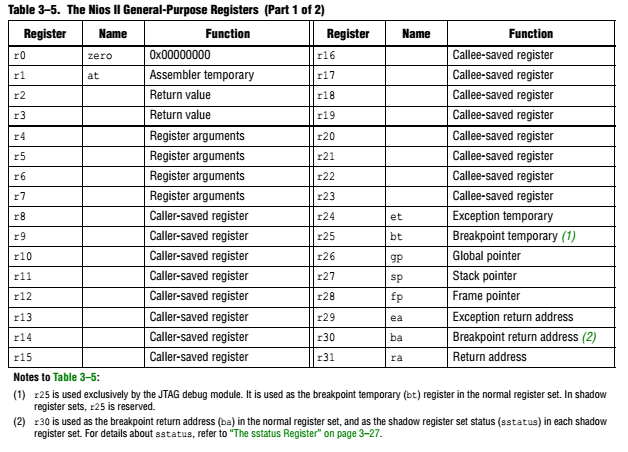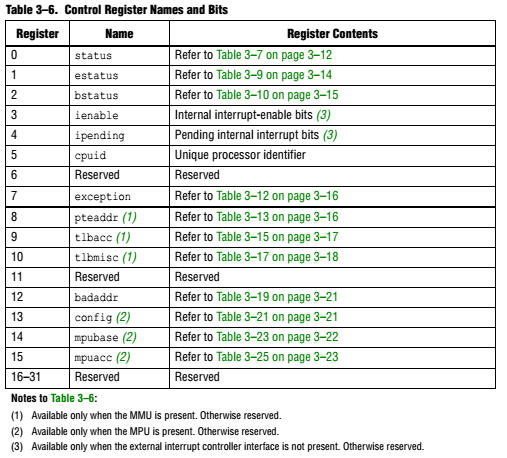参考文献:Nios II Processor Reference Handbook(page 48)
Nios II register (chinese)
The Nios II register set includes general-purpose registers and
control registers. In
addition, the Nios II/f core can optionally have shadow register sets.
This section
discusses each register type.
General-purpose Registers
The Nios II architecture provides thirty-two 32-bit general-purpose registers,
r0
through r31, as described in
Table 3–5. Some registers have names recognized by the
assembler. For example, the zero register (r0) always returns the value zero,
and
writing to zero has no effect. The ra register (r31) holds the return address
used by
procedure calls and is implicitly accessed by the call, callr and ret
instructions. C
and C++ compilers use a common procedure-call convention, assigning specific
meaning to registers r1 through r23 and r26 through r28.

Control Registers
Control registers report the status and change the behavior of the
processor. Control
registers are accessed differently than the general-purpose registers. The
special
instructions rdctl and wrctl provide the only means to read and write to the
control
registers and are only available in supervisor mode.
When writing to control registers, all undefined bits must be written as zero.
The Nios II architecture supports up to 32 control registers. Table 3–6
lists details of
the defined control registers. All nonreserved control registers have names
recognized
by the assembler.

Shadow Register Sets
The Nios II processor can optionally have one or more shadow register sets. A
shadow register set is a complete alternate set of Nios II general-purpose
registers,
which can be used to maintain a separate runtime context for an interrupt
service
routine (ISR).
When shadow register sets are implemented,
status.CRS
indicates the register set
currently in use. A Nios II core can have up to 63 shadow register sets.
If n is the
configured number of shadow register sets, the shadow register sets are numbered
from 1 to n. Register set 0 is the normal register set.
A shadow register set behaves precisely the same as the normal register set. The
register set currently in use can only be determined by examining status.CRS.
Shadow register sets are typically used in conjunction with the EIC interface.
This
combination can substantially reduce interrupt latency.
For details of EIC interface usage, refer to “Exception Processing” on page
3–30.
System software can read from and write to any shadow register set by setting
status.PRS and using the rdprs and wrprs instructions.
